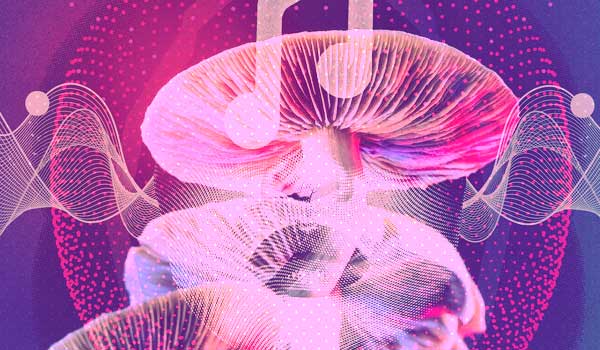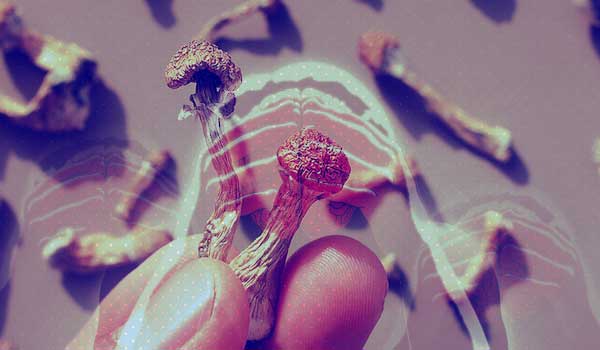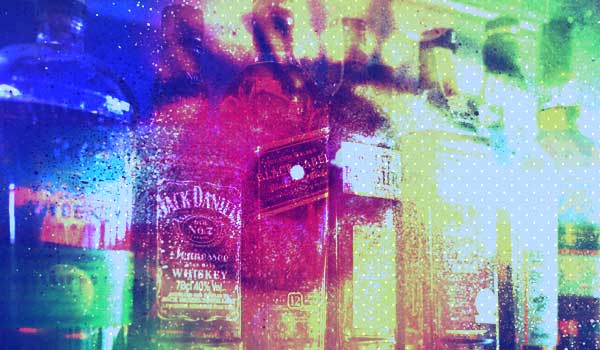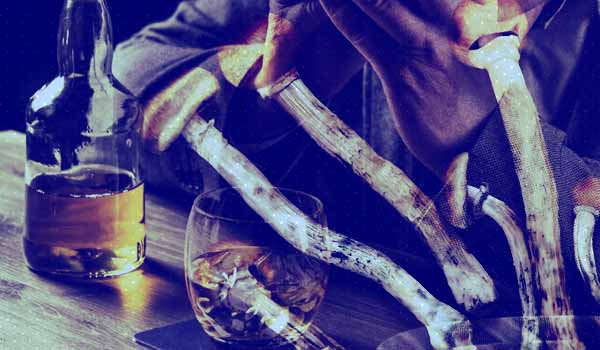LEARN

TOP PLACES TO DO MUSHROOMS IN TORONTO
Introduction
We have received an overwhelming amount of love and support from our Toronto community since Day 1. As a result, we get many emails from both locals and visitors asking where the best places are to hike in Toronto while on a magic mushroom trip. Thus, we conducted an investigation by consulting with senior psychonauts, experts in the field of magic mushrooms, and asked for their recommendations. We have determined that the four crucial factors that make for a great shroom hike are location, length, natural beauty, and privacy.
We present to you our Top Hikes for Magic Mushroom Lovers in Toronto, as recommended by the experts.
Rouge Park
First on the list is Rouge Park, a half-hour drive from downtown Toronto. It has several entrances and signs to guide you along the paths. The trails are moderate in difficulty and are surrounded by breathtaking scenery, especially during the spring and fall seasons. You can find solitude along the way, which makes it perfect for a shroom trip.
Toronto Island
Second, Toronto Island offers hiking trails for different levels of hikers and fitness abilities. The main trail runs through forested paths and sand dunes along Lake Ontario shoreline, which offers a fun variety of scenery throughout the hike.
Don Valley Trail
Third, Don Valley Trail is part of the larger system known as ‘The Beltline Trail.’ It is easy for everyone to go on, with benches set up along the way to take a break. You can also stop at Don Valley River Park for a picnic or playground equipment.
Bruce Trail
Finally, Bruce Trail is a scenic hiking trail that spans 500 kilometers from Niagara Falls to Tobermory on the Bruce Peninsula at Lake Huron. It offers a perfect opportunity for hikers to explore the beauty of Ontario.
Conclusion
In conclusion, SHROOMYZ is glad to have you, and we welcome you to Canada’s best shrooms online dispensary for psychedelic lovers. To buy shrooms in Canada, use our promocode, WELCOME25, and enjoy a 25% discount on every magic mushroom you buy from us. DMT at our company is created with premium quality that will offer you an unmatched psychedelic experience. Buy shrooms online at our dispensary and you will never regret what you did.
Alcohol Dependence Treatment with Psilocybin
Introduction
Many studies indicate that traditional hallucinogens that activate 5HT2A receptors may be helpful in treating alcohol and drug addiction. Although psilocybin’s impacts on diverse groups have been studied recently, there hasn’t been any research on how well it works to treat alcoholism.
The findings of this inquiry, however, highlight the necessity of carrying out controlled trials with bigger sample sizes to investigate the origins and effectiveness of psilocybin therapy for alcoholism. With that said, let’s explore the most recent studies in this field to date.
A Brief Overview on Psychedelics and Psychiatric Treatment
Research conducted during the 1950s to the early 1970s explored the potential of LSD and other traditional hallucinogens (5HT2A agonist or partial agonist) to treat addiction, terminal patients’ existential distress, pain, and other conditions. However, in the past decade, there has been a growing interest in studying the clinical uses of psilocybin, a well-known psychedelic.
Clinical testing has demonstrated the relative safety of LSD, psilocybin, DMT, and mescaline when used in research settings with carefully selected, monitored, and followed-up participants. A recent meta-analysis of six randomized trials of LSD treatment for alcoholism showed that 325 patients receiving LSD therapy experienced a significantly greater improvement than 211 patients in the control group at the initial post-treatment follow-up (ranging from 1 to 12 months). The odds ratio for improvement was 1.96, favoring LSD (95% confidence interval 1.36-2.84, Z= 3.59, p = 0.0003).
In a recent pilot trial, psilocybin was used as a supplement to nicotine replacement therapy, resulting in an incredibly high rate of abstinence (80% at the 6-month follow-up).
Psychological Models of Psychedelic Treatment
The altered state of consciousness experienced during the acute effects of the drug is considered crucial in clinical treatment with classic hallucinogens. There are currently two “psychedelic treatment” paradigms being used.
The first is the “psycholytic” treatment model, which emphasizes the use of traditional hallucinogens to accelerate the course of psychodynamic psychotherapy by facilitating access to unconscious material.
The second paradigm, known as the “psychedelic” therapy approach, is centred on inducing a “peak-psychedelic” or mystical experience of ego loss using relatively high dosages of conventional hallucinogens, such as LSD. It’s common to relate this experience to a psychological death and rebirth. This methodology was used in the majority of clinical studies using LSD to treat addiction or existential dread in the terminally ill in North America. The idea that a single transformational experience might cause long-lasting behaviour change is consistent with conventional accounts of religious conversion and unplanned experiences of Quantum Change.
Recent studies have shown that the self-reported “mystical” aspect of the experience, which includes sensations of unity, sacredness, ultimate reality, transcendence of time and space, intensely felt positivity, and ineffability, significantly predicts the experience’s lasting personal significance and personality change in normal volunteers who have taken psilocybin.
The case for investigating whether conventional hallucinogens can improve treatment response in alcoholics is made strongly by the results presented here. Psilocybin hasn’t historically been investigated for use in treating alcoholism, despite accumulating evidence that it has clinically significant effects and is safe when administered under medical supervision.
Overview
The local community was tapped for participants by using flyers and advertisements in the local media. They were males and females between the ages of 25 and 65 who had been identified as having active alcohol dependence using the Structured Clinical Interview for DSM-IV (SCID), who had engaged in at least two binge drinking occasions within the previous 30 days, who had expressed concern regarding their drinking, and who were not undergoing treatment at the time.
How to Create a Safe and Comfortable Environment for Your First Psychedelic Mushroom Experience
Pick Your Setting
It is advisable to consume magic mushrooms for the first time in a familiar and comfortable environment, preferably in your own living room or bedroom. You can create a cozy setup that complements your experience by finding the best place to sit and keeping essential items within reach, such as a remote control, a bottle of water, and a journal. Adding pillows and blankets can also enhance your comfort level.
While taking shrooms at a friend’s place is possible, it’s important to choose a location that you know and trust. Make sure your friend informs you of any off-limits areas or rules during your trip.
It’s not recommended to consume shrooms in a public place for the first time, as it could lead to a potentially unpleasant situation, especially if you’re not familiar with their effects. Magic mushrooms can sometimes cause anxiety, and worrying about others knowing that you’re impaired can make it worse.
Find a Trip Sitter
For your first time doing shrooms, it’s not advisable to take them alone. The experience can be intense and profound, and you may feel unlike yourself. Therefore, it’s recommended to invite a trip sitter, such as a trusted friend, to oversee your magic mushroom journey and ensure your safety and mental wellbeing while you’re in an altered state.
A trip sitter can be helpful in distinguishing between hallucinations and reality, and they can assist you with tasks such as retrieving items from another room while you’re tripping on the ground.
Curate Your Mindset & Intentions
Before trying magic mushrooms, it’s important to ensure that you’re in a positive emotional state. Negative emotions such as stress, anger or depression can impact your experience, so consider meditating or journaling to address any negative emotions or plan your trip for another day when you’re in a better frame of mind.
It’s also important to determine why you want to use mushrooms, as this will guide your experience. Some individuals take psilocybin to learn about themselves or heal, while others just want to have fun. Whatever your reason, make sure to set intentions and plan accordingly.
Spend some time reflecting on what you hope to gain from the experience to better prepare for the journey.

Seven Activities to Try During Your Magic Mushroom Experience
Here are some suggestions to make the most of your 3-6 hour psilocybin trip:
Play Music
Music can be hypnotic while on a psilocybin high. You can either make a playlist tailored to your mood or search online for one.
Watch a Movie
While tripping on magic mushrooms, watching a funny movie is a fantastic way to spend your time. Some individuals have reported that when they’re under the influence of psilocybin, live-action movies appear like cartoons! You can also opt to watch TV shows or browse through YouTube to keep yourself occupied.
Stretch or Do Yoga
Engaging in physical activity can improve the quality of your psilocybin trip. Nonetheless, it’s crucial to stay away from strenuous exercises like jogging. Instead, choose simple yoga positions or soft stretching activities that might aid in your relaxation and sense of comfort. Breathe deeply and pay attention to how the movement makes your muscles feel.
Look at Beautiful Things
While you’re on magic mushrooms, even the simplest things can fill you with wonder. Watching videos of stunning locations or mesmerizing patterns can be a great idea. You could also explore new textures like slime, faux fur, or water, which can feel intriguing and pleasant to touch.
Explore Nature
While experiencing the effects of magic mushrooms, you might feel the urge to connect with nature. Going for a walk or lying down on the grass can be very calming and peaceful.
However, if you choose to go outside, it’s essential to have your trip sitter with you to ensure your safety. It’s recommended to avoid crowded areas if it’s your first time using shrooms. Your backyard or a nearby sidewalk could be enough to provide a sense of wonder.
Journal
It’s important to keep track of your thoughts and feelings while you’re on a psilocybin trip. Take the time to write in a journal a few times during your experience. Let your thoughts flow and write continuously for 5-10 minutes without interruption.
You might find that you have some unexpected insights during your trip. Documenting these in writing can help you make sense of your emotions and gain valuable insights from your time on magic mushrooms.
Make Art
Psilocybin has been known to enhance creativity in individuals. Therefore, it’s recommended to keep some art supplies within reach to channel your creativity and make something fantastic! Consider gathering materials like a sketchpad, pencils, markers, clay, or painting supplies. Even if you don’t consider yourself an artist, it can be interesting to see what you’re capable of creating while under the influence of psilocybin.

Exploring the Potential of Magic Mushrooms to Alleviate Depression and Anxiety
Introduction
While many people associate magic mushrooms with recreational use and hallucinations, recent research indicates their potential as a treatment for various medical conditions. Psilocybin mushrooms have shown promise in improving mental health, including reducing depression and anxiety. In this article, we explore the science behind magic mushrooms and their potential benefits for mental well-being.
How Shrooms Work in Your Brain
Traditional uses of psilocybin mushrooms include inducing hallucinations for amusement, but new research indicates that they can also have a substantial impact on mental health issues. Magic mushrooms function by converting psilocybin into psilocin, which binds to 5-HT receptors and influences serotonin production and uptake, a crucial neurotransmitter for maintaining mental health and controlling mood.
Psilocybin can help raise serotonin levels in the brain, having a good effect on mental health. Low serotonin levels can cause anxiety and sadness. Moreover, psilocybin makes the brain form new neural connections that connect various brain regions and open up new communication pathways.
As a result, there may be a sizable cognitive change and fresh viewpoints on issues like life and mental health. Magic mushrooms may be a viable treatment for mental health problems, although more research is required in this area.
Magic Mushrooms Combat Depression and Anxiety
Overall, there is anecdotal or scientific evidence that magic mushrooms can help patients with the following conditions:
-
Anxiety
-
Addiction
-
Depression
-
Obsessive compulsive disorder (OCD)
-
Fear from terminal cancer
-
Anorexia
-
ADHD
Although magic mushrooms are still illegal in many regions, the current research on the effects of psilocybin is showing promise. A survey of almost 1,000 microdosers found that their lives had improved since they began microdosing. Improvements were observed in mood, depression, stress, and anxiety levels. In another study, participants were assessed for their emotional attitudes and outlook towards life before and after microdosing. The results showed that microdosers had fewer negative emotions and dysfunctional attitudes, and scored higher in areas such as creativity, wisdom, and open-mindedness.
Tips for Using Psilocybin for Mental Health
Choosing whether to take a single large dose or a series of smaller doses over time is the first step in using magic mushrooms to improve your mental health. While though a single high dose could have a more noticeable effect, it also raises the risk of having a bad experience.
Macrodosing For Depression and Anxiety
It is crucial to bring a reliable companion around when taking a full dose of magic mushrooms so they can keep an eye on your trip. It’s also crucial to give yourself at least 12 hours to feel the results completely. It is advised to keep a journal on hand to record your experience.
Magic mushrooms are typically regarded as safe, and an overdose is not feasible. Nonetheless, you might encounter some negative consequences, such as:
-
Delusions
-
Drowsiness
-
Headaches
-
Nausea
-
Nervousness
-
Panic
-
Paranoia
-
Psychosis
Microdosing For Mental Health
Microdosing may not initially be noticed, but with time, it can result in a steady reduction in depressive and agitation symptoms. If you want to learn more about the effects of magic mushrooms but don’t want to go on a full-blown trip, use this method.
It’s crucial to understand that microdosing is not intended to cause a trip. To make sure the dosage cures your symptoms without impairing you, it may take some trial and error to find the ideal level. It is advised to begin with a modest dose and gradually raise it as necessary.

LSD Use as a Potential Alcoholism Treatment
Introduction
There exists substantial clinical evidence for the use of traditional hallucinogens, particularly LSD, in treating alcohol use disorder. Initially, due to its shared chemistry with serotonin, LSD was thought to induce psychosis. Later studies suggested that it could aid in addiction treatment. However, due to concerns about widespread, uncontrolled use and potential adverse effects, LSD is now classified as an illegal substance with no established medical value.
What is LSD?
LSD, or lysergic acid diethylamide, is a powerful hallucinogenic substance with potent psychedelic effects. It can significantly alter an individual’s perception of reality and intensively distort their senses. Originally, the source of LSD was ergot, a fungus that grows on rye and other grains.
What to expect after taking LSD?
-
Halos of light, impaired vision, distorted shapes and colours of objects and faces are only a few examples of the visual consequences.
-
Shaking, pressure, and dizziness are changes correlated with touch.
-
Changes in mood can result in feelings of euphoria, ecstasy, calm, dreaminess, and increased awareness, as well as despair, anxiety, and confusion.
-
There could be abrupt mood changes.
-
Impact on thinking can result in faster ideas, uncommon insight or horrifying thoughts, and a sense of transcendence.
-
It can also cause a distorted view of time that can be either fast or slow.
Alcohol Use Disorder (AUD)
Between 2006 and 2010, alcohol-related disorders caused about 88,000 deaths each year, accounting for one in ten deaths among working-age individuals in the US. Alcohol is known to affect people more universally compared to other drugs. Globally, alcohol is responsible for the highest burden of disease, causing 4% of total mortality and 5% of disability-adjusted life years.
According to several clinical researchers, combining individual doses of lysergic acid diethylamide (LSD) with psychosocial interventions may assist in preventing relapse of alcohol addiction by providing insights into behavioural patterns and motivating individuals to pursue a sober lifestyle. However, a literature review has revealed that further investigation is needed to determine the potential of LSD as a treatment for addiction.
How Does Alcohol Work?
Although some people may perceive drinking as stimulating, alcohol is a depressant. Ethyl alcohol, the active ingredient in any alcoholic beverage, is rapidly absorbed by the stomach and intestines and quickly distributed throughout the body, where it acts to depress the central nervous system (CNS). Alcohol affects several neurotransmitter systems, but its effects on the brain’s Gamma Aminobutyric Acid (GABA) receptors are particularly noteworthy. By increasing GABA firing, alcohol decreases other brain activity since GABA is the brain’s primary inhibitory neurotransmitter. This is why alcohol is classified as a depressant.
Drinking more alcohol causes a slowdown, depression, or, more precisely, a suppression of the:
-
Nervous system, the (CNS)
-
Motor coordination impairment
-
Shorter reaction times
-
Reduced memory
-
Faulty judgement
-
Functional impairment of the eye’s and ears.



